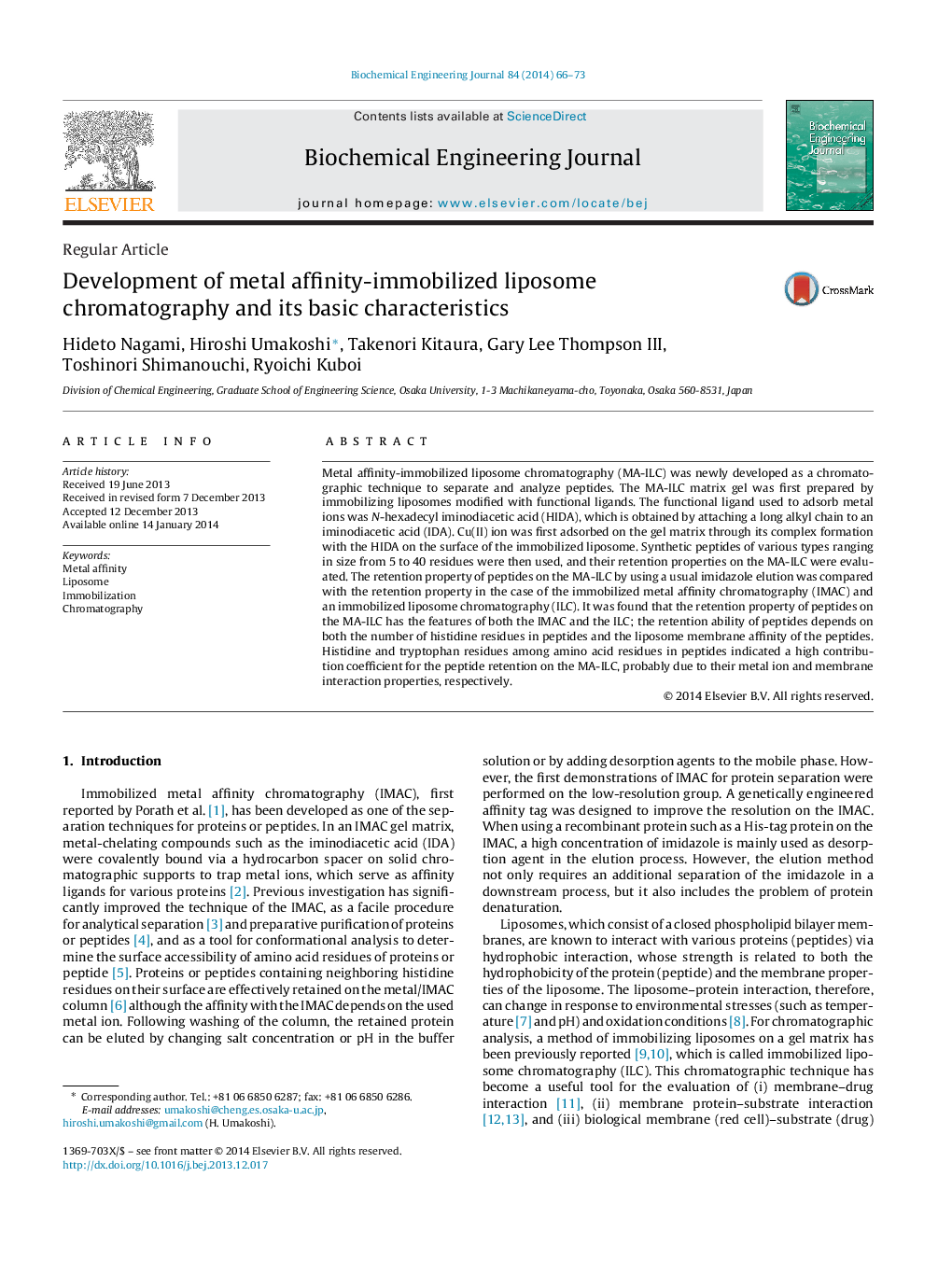| کد مقاله | کد نشریه | سال انتشار | مقاله انگلیسی | نسخه تمام متن |
|---|---|---|---|---|
| 3243 | 160 | 2014 | 8 صفحه PDF | دانلود رایگان |
• Immobilized liposome chromatography (ILC) was combined with metal affinity.
• Ligand-modified liposome immobilized on the gel matrix could adsorb the cupper ion on its surface.
• The adsorption of several peptides was dependent on both hydrophobicity and number of His residue.
Metal affinity-immobilized liposome chromatography (MA-ILC) was newly developed as a chromatographic technique to separate and analyze peptides. The MA-ILC matrix gel was first prepared by immobilizing liposomes modified with functional ligands. The functional ligand used to adsorb metal ions was N-hexadecyl iminodiacetic acid (HIDA), which is obtained by attaching a long alkyl chain to an iminodiacetic acid (IDA). Cu(II) ion was first adsorbed on the gel matrix through its complex formation with the HIDA on the surface of the immobilized liposome. Synthetic peptides of various types ranging in size from 5 to 40 residues were then used, and their retention properties on the MA-ILC were evaluated. The retention property of peptides on the MA-ILC by using a usual imidazole elution was compared with the retention property in the case of the immobilized metal affinity chromatography (IMAC) and an immobilized liposome chromatography (ILC). It was found that the retention property of peptides on the MA-ILC has the features of both the IMAC and the ILC; the retention ability of peptides depends on both the number of histidine residues in peptides and the liposome membrane affinity of the peptides. Histidine and tryptophan residues among amino acid residues in peptides indicated a high contribution coefficient for the peptide retention on the MA-ILC, probably due to their metal ion and membrane interaction properties, respectively.
Comparison of recognition site of IMAC, ILC, and MA-ILC.Figure optionsDownload as PowerPoint slide
Journal: Biochemical Engineering Journal - Volume 84, 15 March 2014, Pages 66–73
